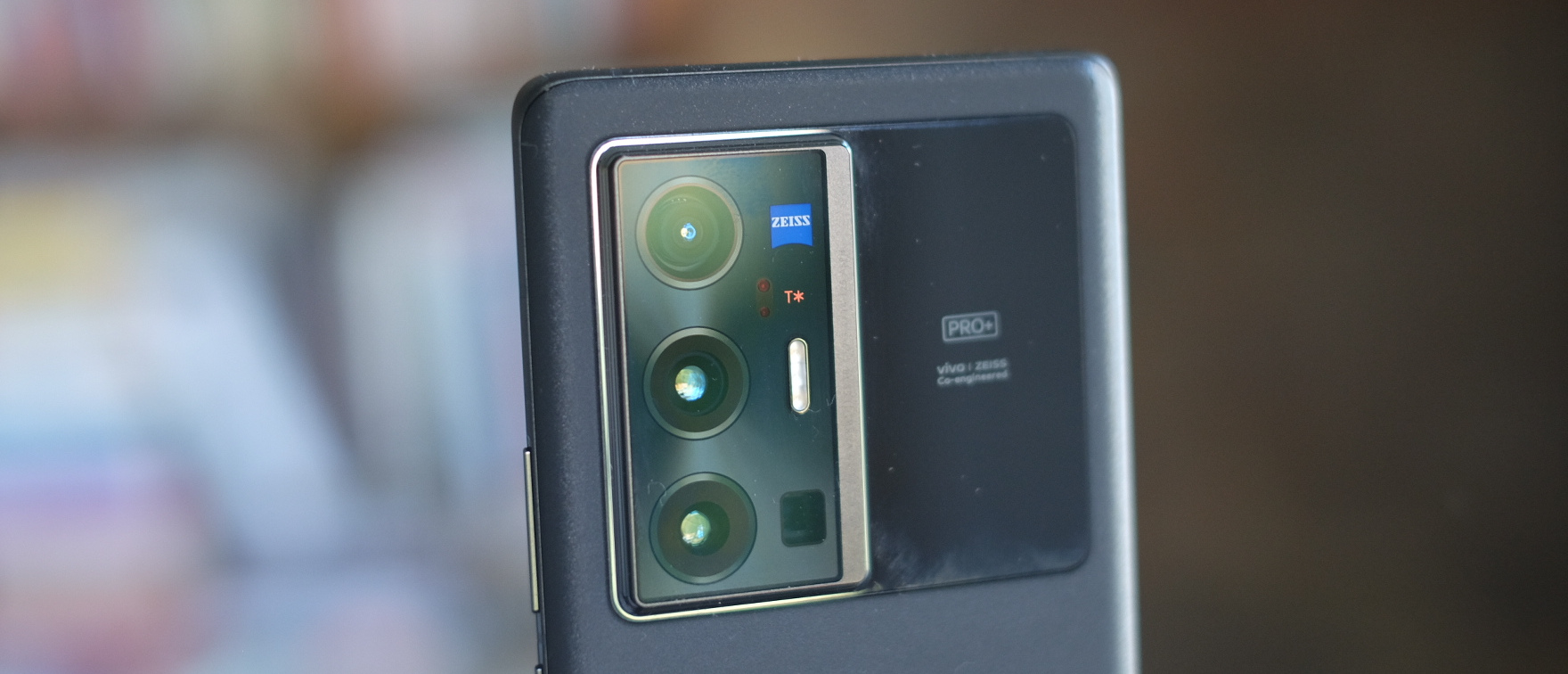Digital Camera World Verdict
The X70 Pro Plus+ pushes smartphone imaging forward. Its dizzying array of large-aperture Zeiss optics give you more options than ever when it comes to telephoto shooting, portraiture, night shots and more, while the built-in gimbal opens up new possibilities for video. It’s a hefty boy, but in terms of sheer versatility, it’s tough to beat.
Pros
- +
Super-high quality images
- +
Intuitive, flexible zoom capabilities
- +
Gimbal stabilisation
- +
Loads of shooting modes
Cons
- -
Quite big and bulky
- -
Some modes don’t do much
Why you can trust Digital Camera World
Vivo’s smartphones have always put photography first. While the camera capabilities are a hugely important part of any smartphone’s proposition these days, the Chinese manufacturer has really put this into practice with its latest flagship, the X70 Pro+. Its rear camera array is a beefy four-module array, boasting Zeiss-made optics that give the user impressive optical zoom and bokeh capabilities. What’s more, the phone also sports gimbal-stabilised video with resolution up to 8K.
A lot of promise, but how does it deliver in practice? Let’s take a look.
Vivo X70 Pro+: Specifications
- Rear cameras: 50MP primary camera with GN1 sensor; 48MP ultra-wide gimbal sensor; 12MP portrait sensor; 8MP periscope camera
- Front camera: 32MP
- Max video resolution: 8K 30p
- Screen: 6.7-inch WQHD E5 AMOLED curved display, 3200 x 1440 resolution
- Chipset: Qualcomm SM8350 Snapdragon 888+ 5G
- OS: Android 11
- Battery: 4500mAh
- Dimensions: 164.5 x 75.2 x 8.9mm
- Weight: 209g
Vivo X70 Pro+: Key features
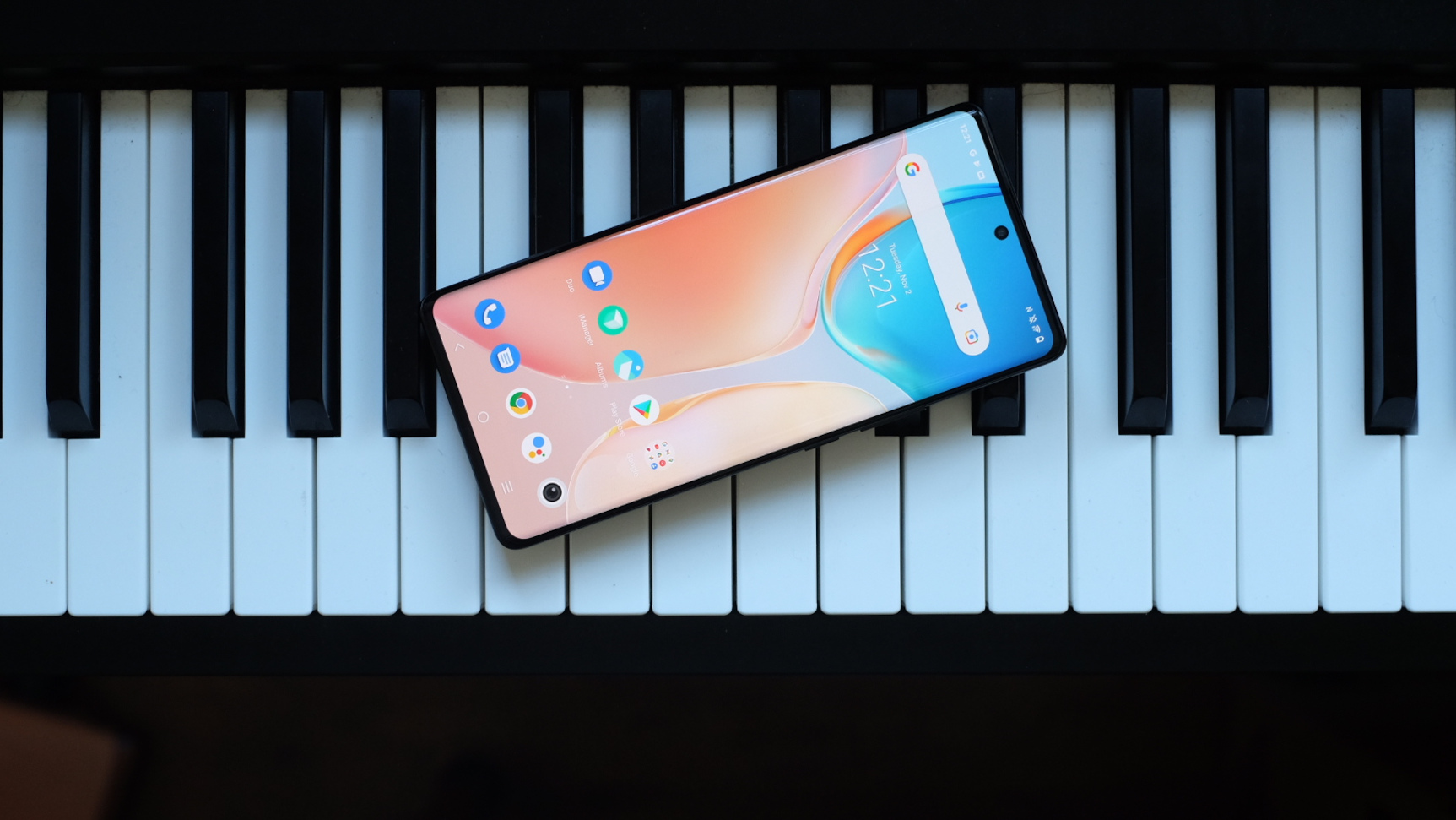
The Vivo X70 Pro+ made headlines with its aforementioned quad camera array. Its rear camera setup features a 50MP wide module, an 8MP periscope telephoto module, a 12MP telephoto module and a 48MP ultrawide module. The latter of these also has Vivo’s impressive gimbal technology, allowing for smooth and stabilised video.
What this means in practical terms is that you can flick from 23mm, to 14mm, to 50mm and to 125mm (all full-frame equivalent focal lengths) with ease, and get the most out of the high resolution thanks to a set of Zeiss optics. This is also what enables the generously wide maximum aperture of f/1.7. The optical elements have also been treated with Zeiss’s coveted T* coating. The front camera, meanwhile, is a 32MP unit.
Under the bonnet, things are powered by a Qualcomm Snapdragon 888+ chipset, which makes operation impressively smooth. The display is a 6.7-inch WQHD E5 AMOLED curved screen with a resolution of 3,200 x 1,440 pixels, as well as 1500nits maximum brightness, 120Hz adaptive refresh rate and 300Hz response time. Top-end stuff across the board.
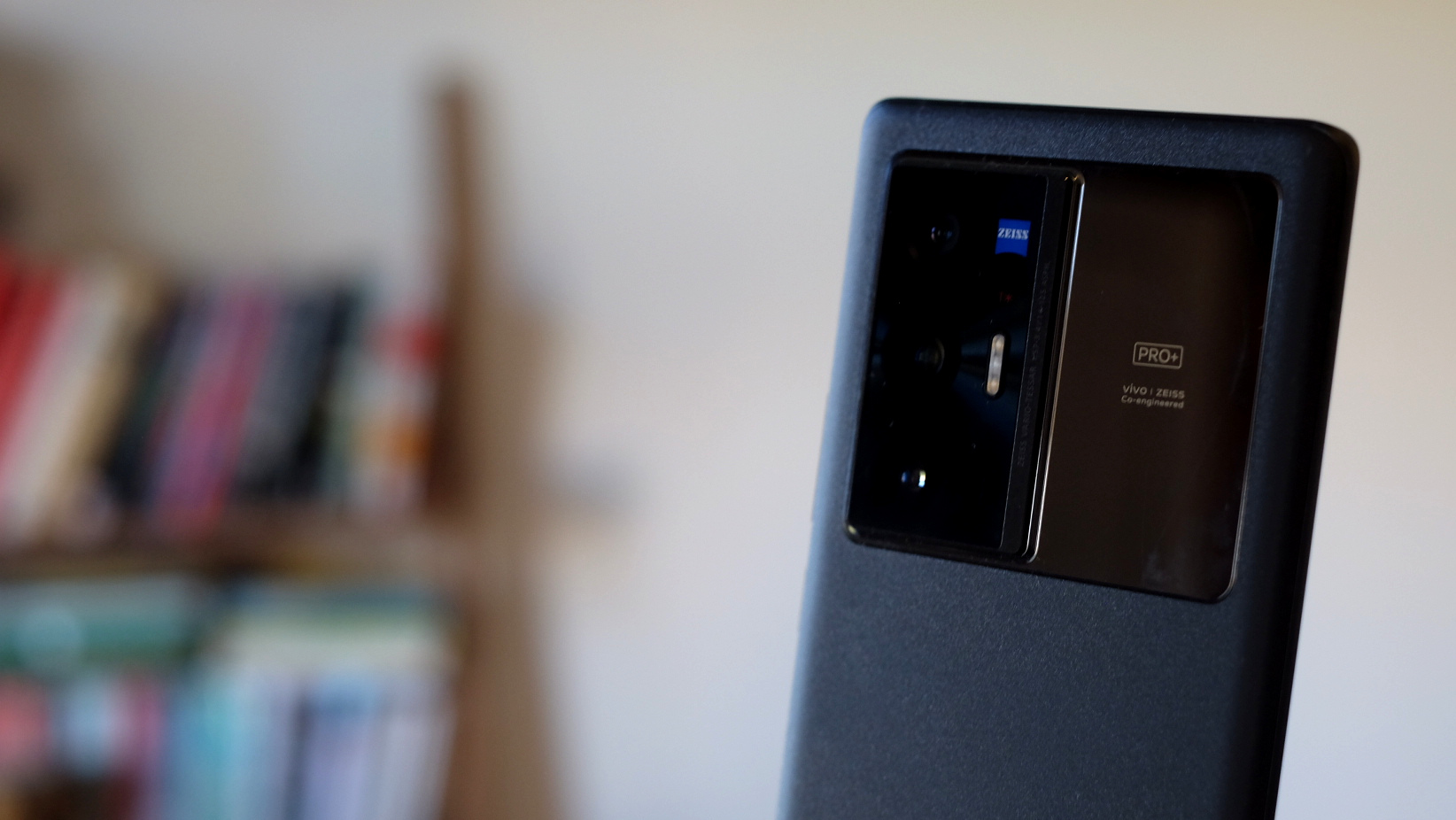
Vivo X70 Pro+: Build and handling
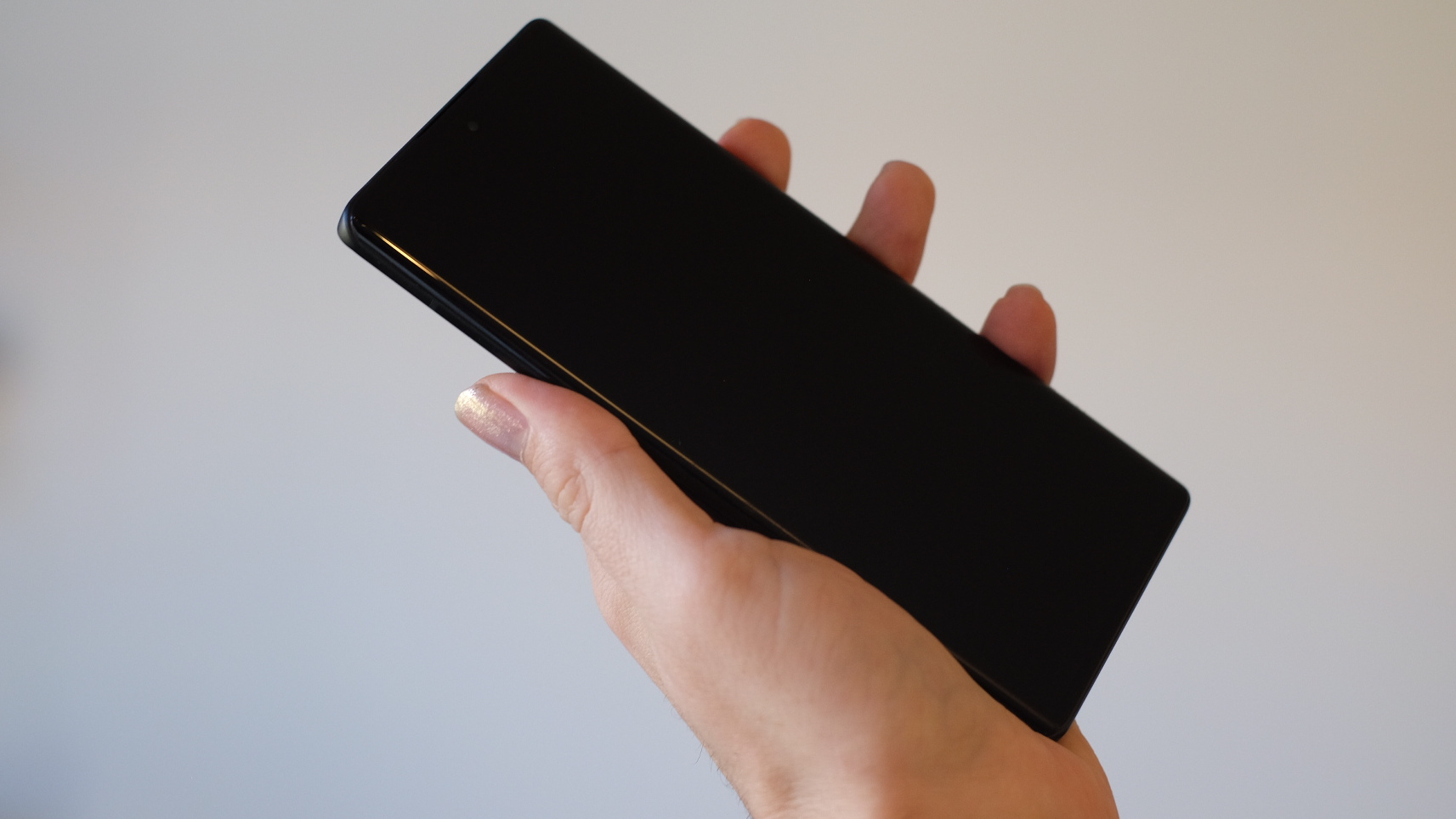
From the front, the X70 Pro+ looks much as you’d expect – a Kubrickian black monolith, whose curved edges make the screen seem as though it’s disappearing into infinity. The rear, however, has a pleasing matte finish and grippable texture – according to Vivo, it’s made from fluorine-treated glass.
This is undeniably a big phone. It weighs in at 209g, which is weight you’ll notice if you’re holding it in one hand for too long, and it’s 9mm thick too. Outdoorsy users will appreciate that it’s the first Vivo phone to come with waterproofing; the X70 Pro+ is IP68 rated, meaning it should be able to be submerged to depths of 1.5m for up to 30 minutes. While I didn’t push things that far, I can personally attest that the phone can withstand a brutal (and, may I say, un-forecast) rainstorm without any problems.

Vivo X70 Pro+: Performance
Old photographers of a certain ilk, clutching their rangefinders, are fond of saying that zoom lenses make you lazy. Well, having spent time with the X70 Pro+ and its optical zoom lenses, I can confirm that they are absolutely correct. The X70 Pro+ made me incredibly lazy, and I loved it.
The zoom options sit on the display by default, and using them becomes second-nature. I nimbly flicked from 23mm to 14mm to 50mm to 125mm and back around again. Below is a selection of images I captured of the same building, from the same standing position, within seconds of each other. That, my friends, is versatility.
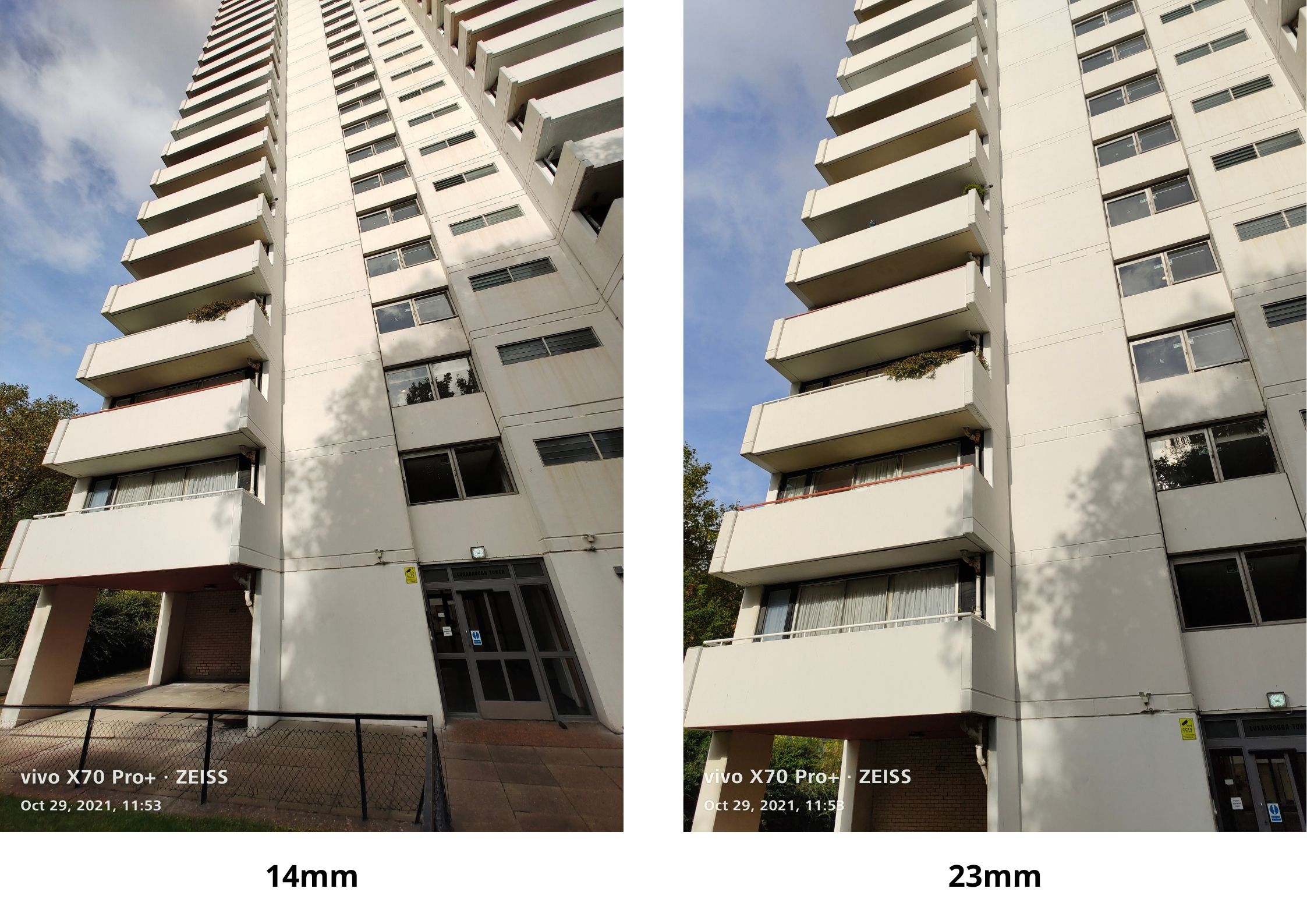
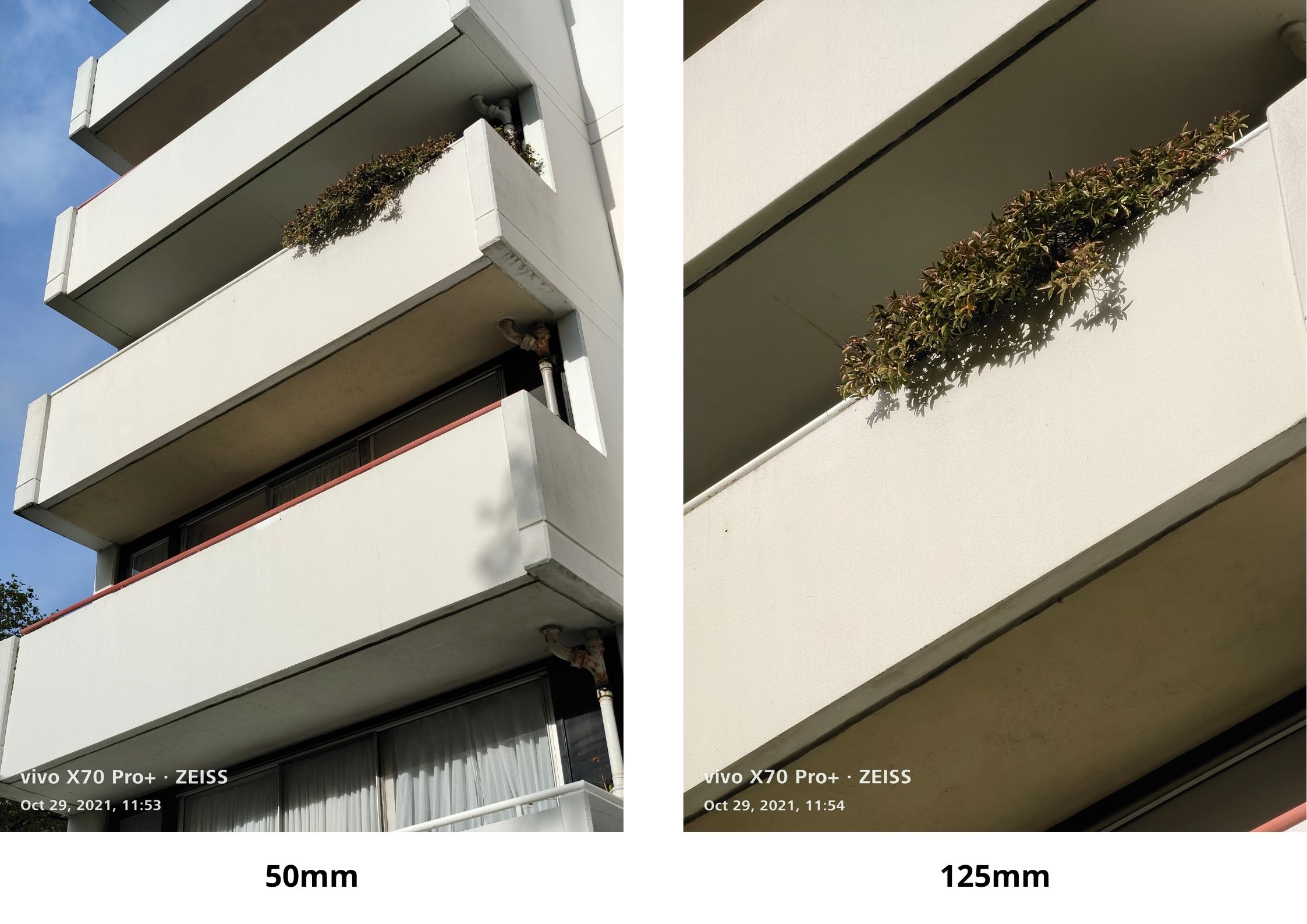
The X70 Pro+ provides a manual mode for controlling shutter speed, aperture et al, but realistically you won’t use it except in particularly difficult lighting situations – not least because the exposure controls supplant the much-more-useful zoom controls on the display. You’ll have much more fun delving into Portrait Mode and playing around with Zeiss bokeh styles, including Biotar, Sonnar, Planar and Distagon. These can also be edited and reapplied post-capture, which is pretty neat.
There are also AI-powered scene recognition, HDR, and Zeiss Natural Colour modes. I played around with different combinations of all three and, in all honesty, barely noticed any difference. In any case, image metadata doesn’t record whether these modes were activated, making it basically impossible to keep track of when you’ve used them (I resorted to the Notes app), so it’s hard to discover which you prefer via experimentation.
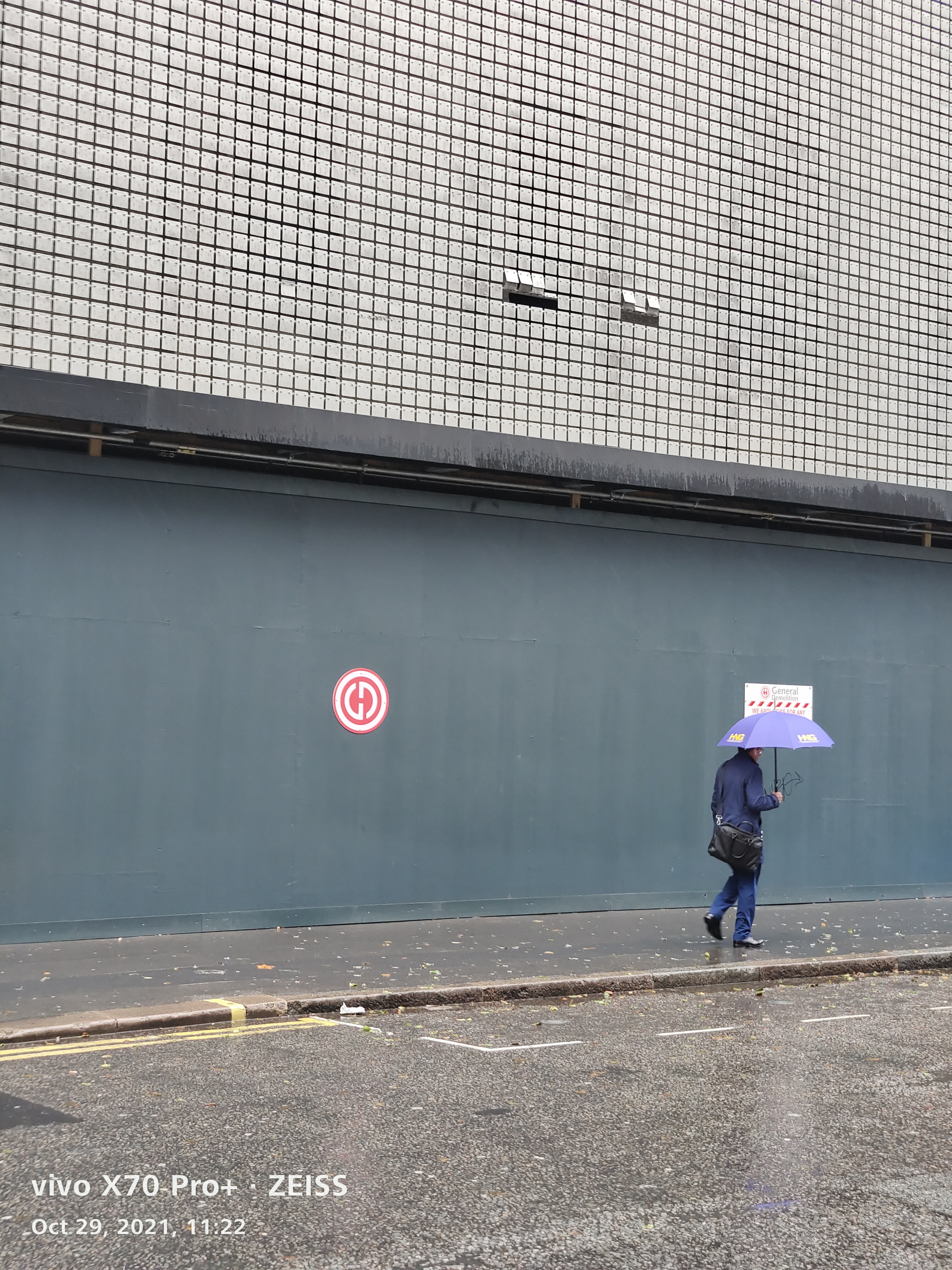
This is, I admit, a pernickety complaint. And on the subject of pernickety complaints, having image watermarks activated by default is an act of psychological violence against me specifically. I won’t tell you how many images I shot before I realised that the helpful little words in the corners of the gallery images were in fact permanently branded on there, but it was 102.

Battery life is excellent. A day spent snapping barely nicked the meter of the 4,500 mAh battery. Worth a shout out too are the video modes; the built-in gimbal makes it super-easy to get smooth and stable moving footage. The buttery-smooth 4K 60p looks great, though you can push it up to 8K if so desired. The gimbal also powers the excellent Night Mode, allowing for 1sec exposures completely handheld.

Vivo X70 Pro+: Verdict
The Vivo X70 Pro+ is a sandbox of a smartphone. Absolutely spilling over with shooting modes and features, it lets you lose yourself in playing with the various things its cameras are capable of – though you may find yourself wishing for a better way to keep track of which settings you’ve used. It’s a hefty, chunky phone, but if that doesn’t bother you, it’s an impressive step forward for smartphone imaging.
Read more
• The best camera phones you can buy today
• The best budget camera phone
• The best burner phones
• The best phablet
• Which is the best iPhone for photography?
• Best phone cases
• Best wireless chargers
Jon spent years at IPC Media writing features, news, reviews and other photography content for publications such as Amateur Photographer and What Digital Camera in both print and digital form. With his additional experience for outlets like Photomonitor, this makes Jon one of our go-to specialists when it comes to all aspects of photography, from cameras and action cameras to lenses and memory cards, flash diffusers and triggers, batteries and memory cards, selfie sticks and gimbals, and much more besides.
An NCTJ-qualified journalist, he has also contributed to Shortlist, The Skinny, ThreeWeeks Edinburgh, The Guardian, Trusted Reviews, CreativeBLOQ, and probably quite a few others I’ve forgotten.
